The Fabric Of Our Lives
I grew up in rags.
No, I don’t mean I lacked proper clothes. As I’ve confessed in this column before, I’ve always been something of a fashion diva. Now you’ll know why.
I’m referring to the clothing business, where “rag” or the Yiddish word for it, “shmata,” is often used as a humorous slang description. My father had a Western wear factory. That’s where I learned to love fabrics and trims with their infinite variety of textures, colors, and patterns that with a little vision could be turned into an equally infinite variety of garments. My favorite toys were empty thread spools that could become any structure I could conjure.
So, when I received a pitch to meet Angela Johnson and Sherri Barry, co-founders of the two-year-old fashion incubator FABRIC (Fashion and Business Resource Innovation Center) based in Tempe AZ and representing over 300 diverse fashion labels, from wedding dresses to leather purses, I couldn’t resist the opportunity.
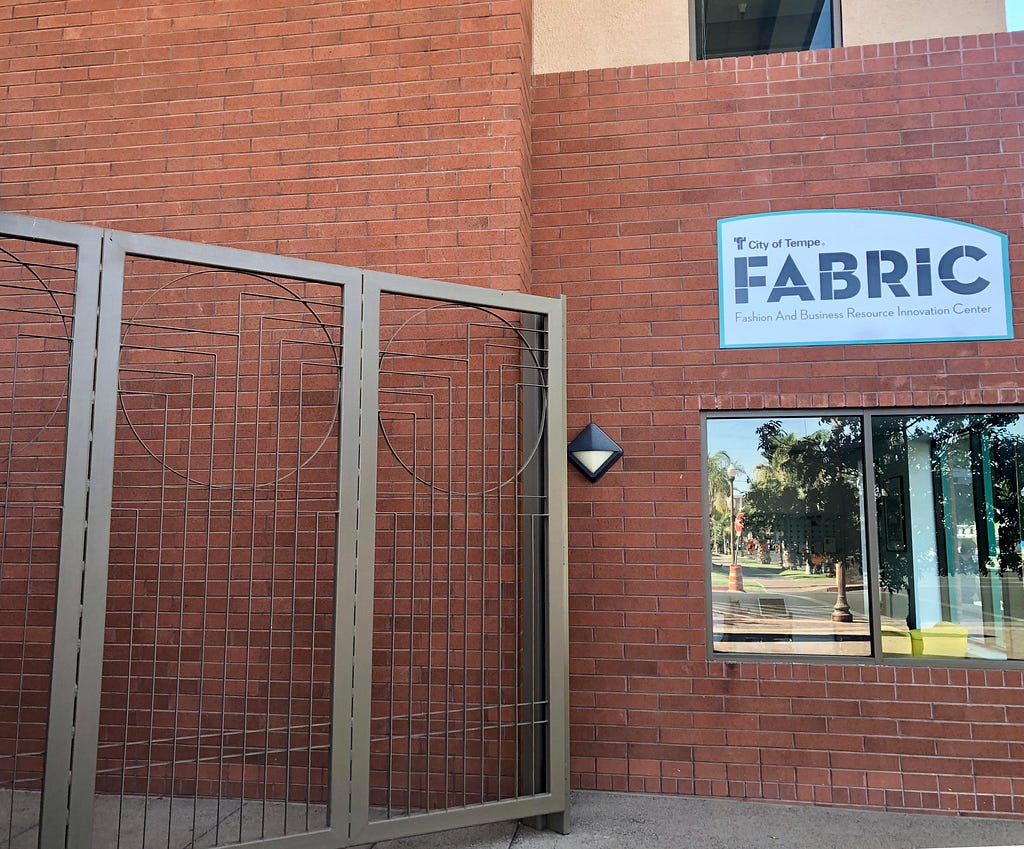
Entrance to the building
The two women met me in the foyer of the 23,000 square foot former Tempe Performing Arts building that had been sitting vacant for several years. Use of the building was donated, but they have refurbished it bit by bit to accommodate their vision. Now it’s a happening place where Johnson and Barry provide emerging designers and small-batch brands with manufacturing facilities to build sustainable fashion businesses locally.
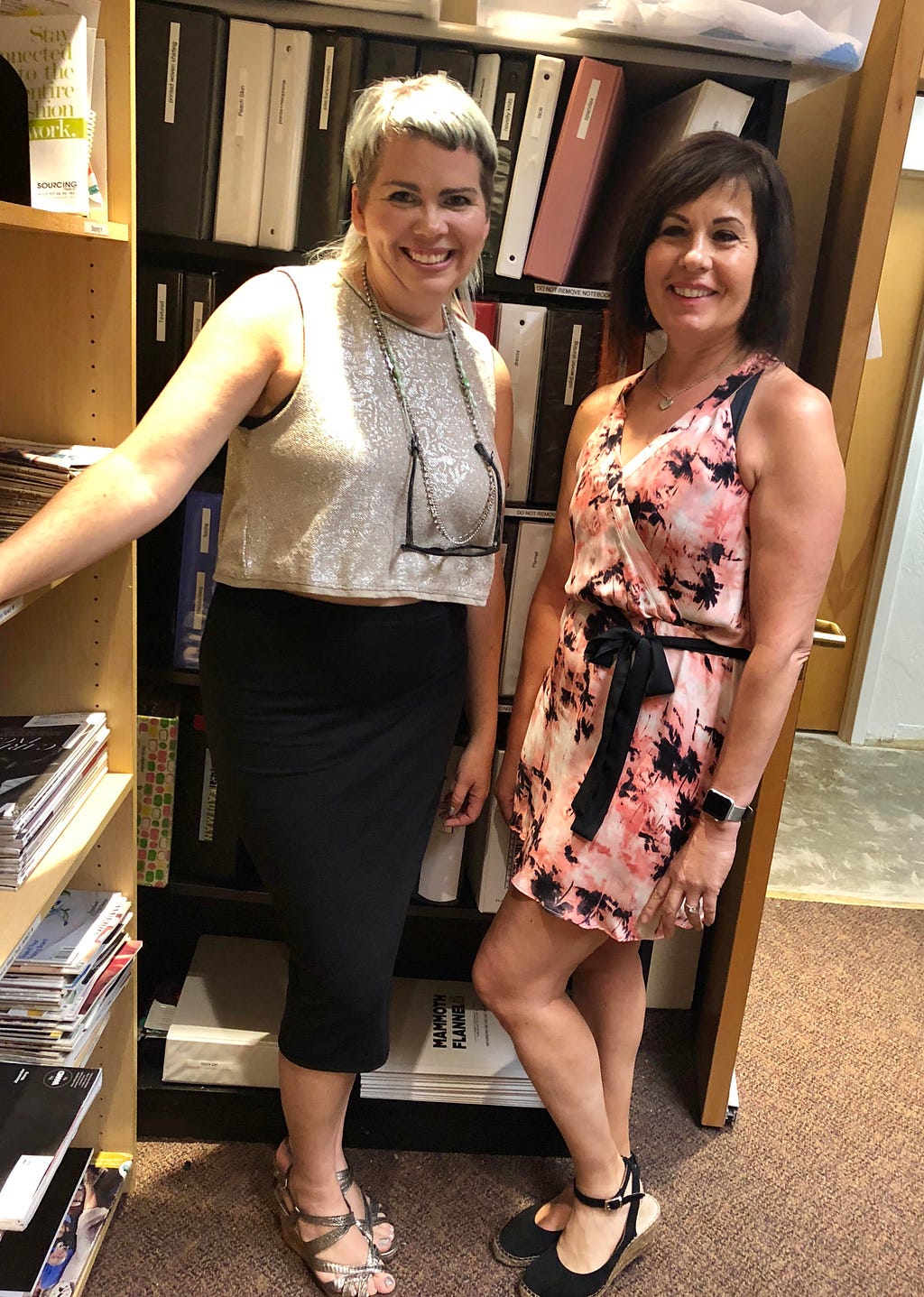
FABRIC cofounders Angela Johnson and Shari Barry in the resource library.
Contributions of white leather upholstered furniture and flashy silver metal cabinets give the interior an upscale look, and works of local artists adorn the walls, a statement that this is a community-wide venture.
I quickly learned that their unique partnership with the city of Tempe has become a model of public-private for profit-nonprofit collaboration benefitting everyone involved, and FABRIC has, as a result, become the center of the Arizona fashion industry.

Cutting table and sewing machines line the wall in the large coworking room that doubles as a runway.
The Arizona fashion industry? Who knew there was such a thing? I associate the term with New York and to a lesser extent Los Angeles.
It turns out that many aspiring designers are delighted to be able to get their start away from those high-cost fashion centers.
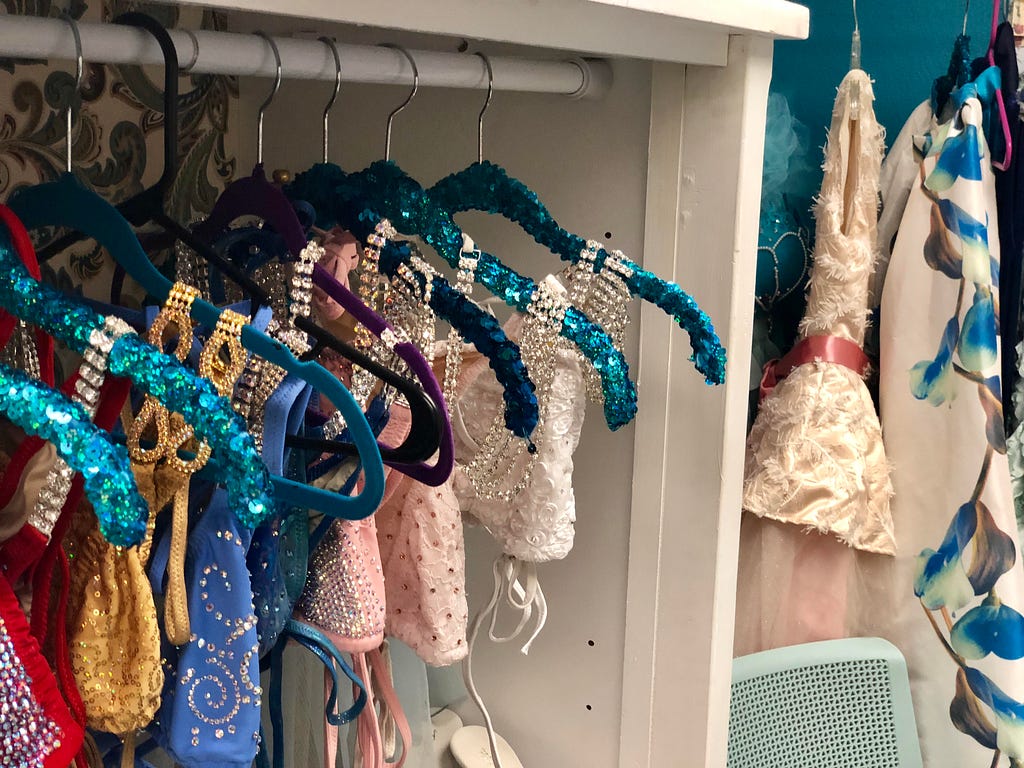
Beaded bikinis
More importantly, FABRIC bustles with vertically integrated services, a one-stop shop with everything budding designers need to source fabrics and trims, use the latest technology to design their patterns, access the services of in-house makeup artists, hairdressers, and photographers, utilize industrial sewing equipment, and have the benefit of courses and strategic business resources offered by industry experts, including the two co-founders, in a co-working space that morphs into a runway for fashion shows.
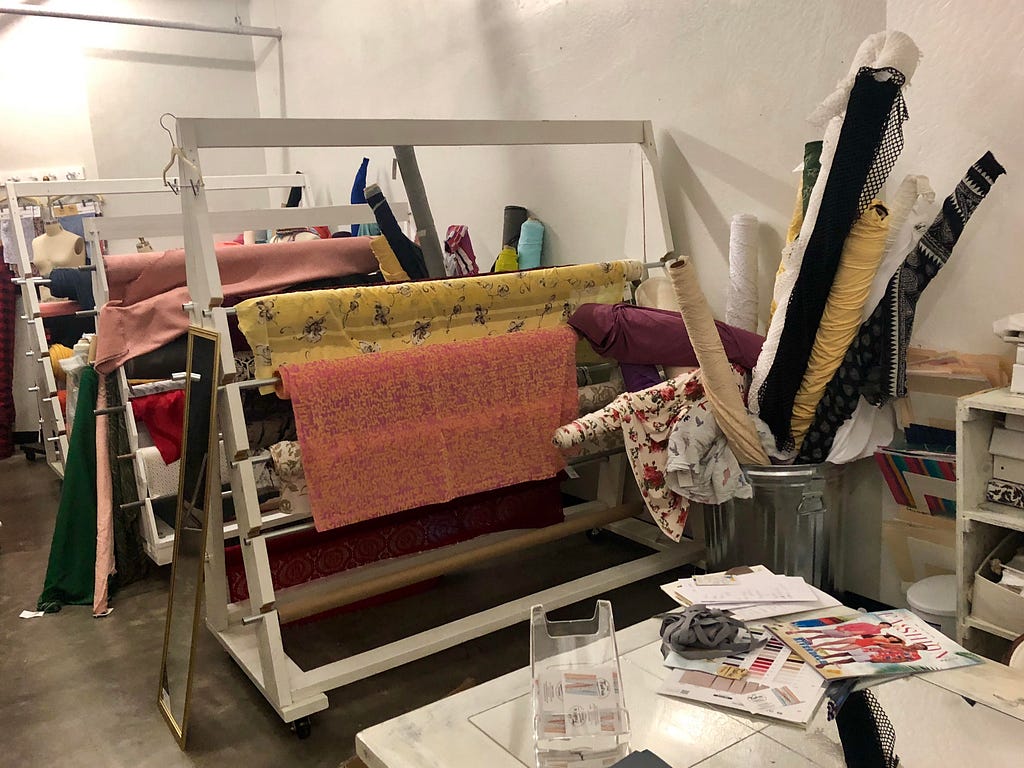
Fabrics turn into garments…
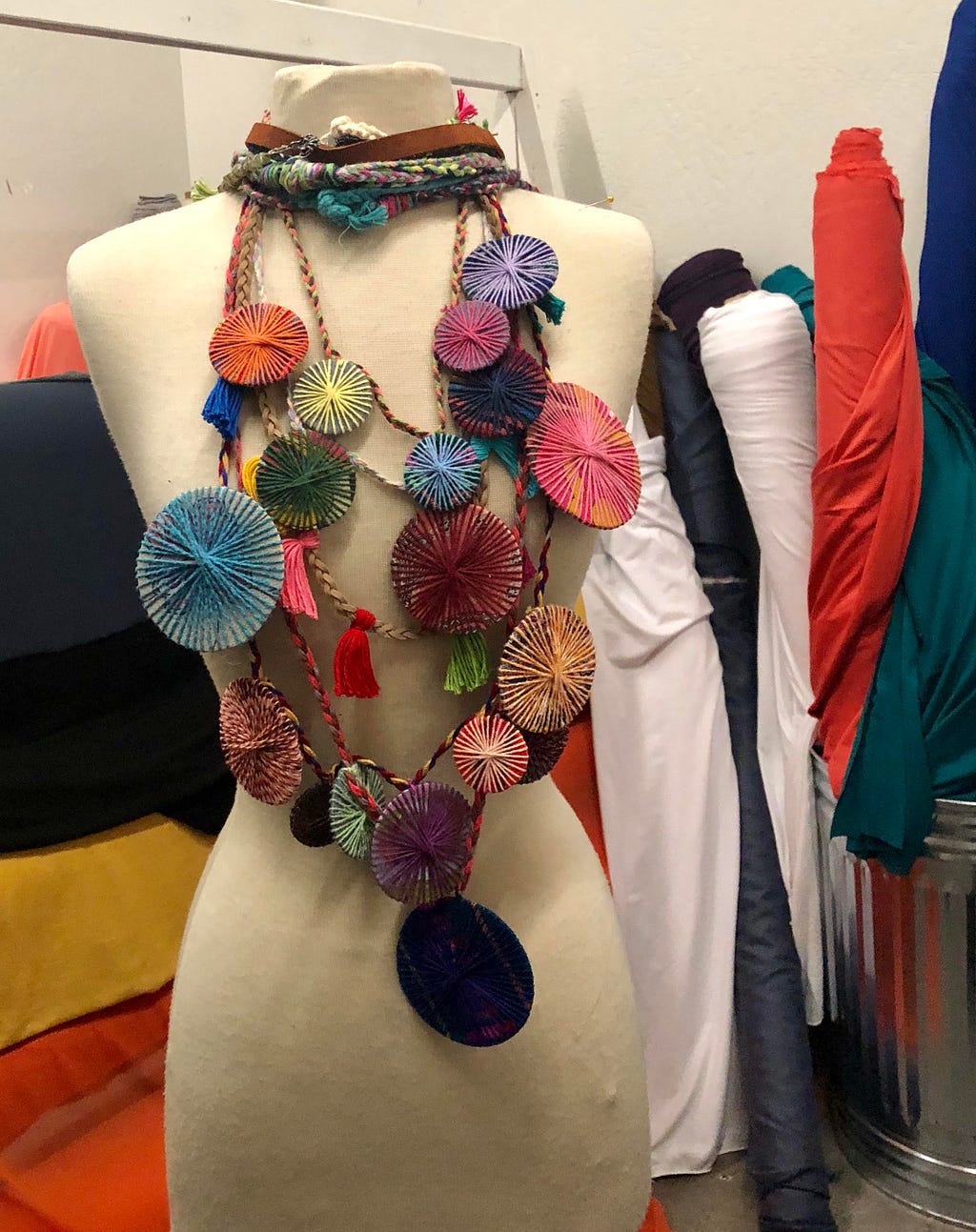
And necklaces.
All that would be quite enough to make FABRIC a model fashion enterprise. But Angela and Sherri have designed a unique ecosystem based on their value set that says everyone has something to give back while getting their business needs met by the low cost or no-cost services they receive. Almost everyone who works in the space, in turn, provides free classes, scholarships for emerging designers, free events, or vocational training for disadvantaged workers. A partnership with Arizona State University and a nonprofit arm, The AZ Apparel Foundation, provide the structure for philanthropically funded services and the participation of over 400 volunteers.
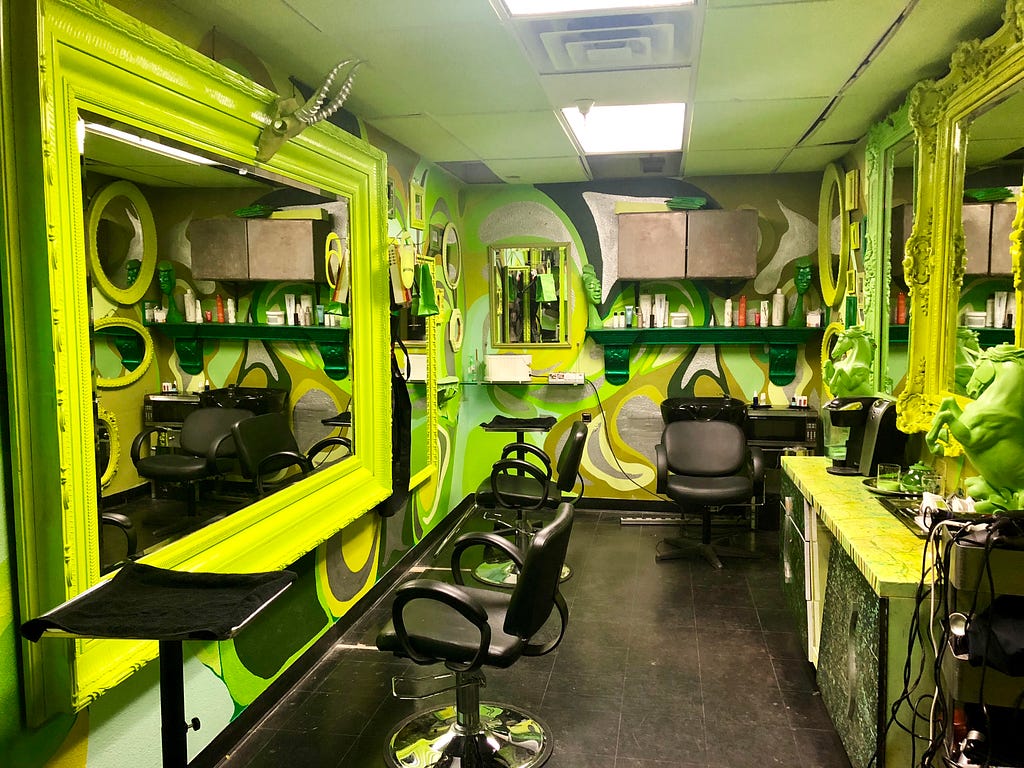
Hairdressing space gives new meaning to the green room.
It’s a self-replenishing system that illustrates perfectly that there is no finite pie. And in a fashion industry having its own #metoo moment beset by claims of an abusive culture, these two women have created a culture that is collaborative, supportive, and ambitiously innovative in a positive way.

On the photo shoot canvas always available for designers.
From my conversation with Johnson and Barry, I took away six leadership lessons that apply to anyone in any sector.
1. Don’t wait till you are ready. “Ready” might never come if you wait till you think you have all the elements you need to start a new endeavor. Neither co-founder had the funding to start FABRIC when they envisioned it. But that didn’t stop them — it motivated them to get creative.
2. There is always a way. You might not see it at first but it’s there. We can easily get into the weeds of our own preconceptions and let power blocks keep us from seeing possibilities. In fact, I’m going to teach an entire weekend workshop on how to get past those blocks and barriers and accelerate your personal leadership journey at the Omega Institute July 27–29. I’ve found that the resources I need are there if I have the wisdom to see them and the courage to use them. That’s not necessarily as easy as it sounds. It took both wisdom and courage for Johnson and Barry to develop a compelling proposal and ask the City of Tempe to consider it. To their delight, they said, the city’s economic development department immediately realized the potential benefits to the city’s economy and offered the building that made FABRIC possible.
3. Let your passion fuel your vision and your vision power your intention. More than anything, I was impressed with the vision and passion of these two co-founders. That’s where most highly successful initiatives start. Barry had been highly successful in retail but always had her vision trained on starting her own fashion brand; her passion fueled her intention to think big and take the plunge. Johnson had launched LabelHorde as the directory she herself needed to source and connect with fashion industry brands and services. But she realized she wasn’t alone and her passion fueled her vision to take it to the next step by creating a one-stop shop.
4. Find the right partners. Johnson and Barry were trying to solve the same problems when they got together to create FABRIC. Both were experienced in the industry but needed local services and manufacturing with low/no minimums for their design businesses to be successful. And each was interested in growing the fashion industry in Arizona. Their needs, visions, and intentions were aligned, so working together multiplied their #SisterCourage and probability of success. Together, they found the right partners in the city of Tempe, and later ASU and they continue to reach out to partner with many other companies and supporters, all contributing to the success of the endeavor.
5. Constantly disrupt yourself. Innovation isn’t a one-off after all. The internet has disrupted retail fashion and customers can now buy their favorite fashions directly from designers, making it possible for small batch and new designers to find their buyers. Yet those smaller designers didn’t have multimillion dollars to source the supplies and skills they needed to produce their garments. Johnson had solved this problem for herself by contracting out each step, but that required her to run around to various locations to fetch her fabrics, cuts, and sewn garments. The incubator puts all those services together and fosters a continuous inflow of people with new ideas. It’s like a petri dish for disruption and innovation.
In my father’s factory, I caught the excitement of realizing I could have a vision and turn that it into reality with the right skills and tools. As we weave the fabric of our lives, these five steps can help us to create our own designs, cut our own patterns, and turn our most passionately held visions into action.
